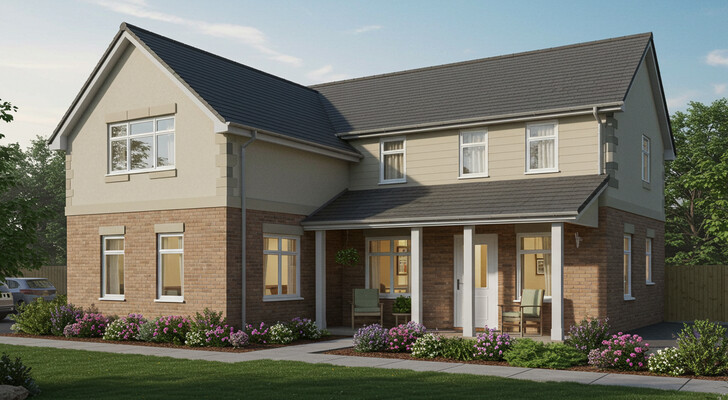
For many families, finding the right long-term care solution for an aging loved one can feel overwhelming. While larger assisted living communities and skilled nursing facilities are well-known choices, small residential care homes, often called “board and care homes,” offer a more personalized, homelike experience. These intimate settings provide a high level of care in a familiar environment, making them ideal for individuals who may feel anxious or overstimulated by larger facilities.
What Are Small Residential Care Homes?
Small residential care homes are private homes converted and licensed to provide care for a small number of residents, typically between 4 and 10 people. Unlike large facilities, these homes are part of residential neighborhoods, offering a sense of normalcy and community. The smaller size allows for a higher staff-to-resident ratio, ensuring each individual receives personalized attention tailored to their specific needs.
The Homelike Environment
One of the most appealing aspects of these homes is the welcoming, family-like atmosphere. Residents often live in private or semi-private rooms and share common spaces such as living rooms, dining areas, and outdoor spaces. Meals are typically prepared fresh on-site, creating a comforting daily routine. This environment reduces stress and enhances emotional well-being, helping residents feel safe, supported, and truly at home.
Comprehensive Personal Care
Small residential care homes provide a wide range of services, including:
- Assistance with daily activities such as bathing, dressing, and grooming
- Medication management and administration
- Nutritious, home-cooked meals
- Housekeeping and laundry services
- 24/7 supervision for safety and emergencies
- Social and recreational activities to promote engagement
These services are delivered with a personal touch, allowing staff to form strong relationships with residents and respond quickly to any changes in their health or mood.
Who Benefits Most
Small residential care homes are ideal for seniors who require help with daily activities but do not need skilled medical care, prefer a quieter, more intimate living environment, thrive in close-knit communities with a family-like atmosphere, feel overwhelmed in a large facility, or seek a cost-effective alternative to larger assisted living facilities.
Costs and Financial Considerations
One of the advantages of small residential care homes is their generally lower cost compared to large assisted living communities. Pricing varies based on location, level of care required, and whether the room is private or shared. Typically, a single monthly fee covers rent, meals, utilities, housekeeping, and personal care.
While these homes often provide more predictable and transparent pricing, it is essential to ask about additional charges for higher levels of care, what services are included in the base rate, and options for payment, including long-term care insurance or other financial assistance. Understanding the financial structure ensures families can plan effectively and avoid unexpected costs.
Licensing and Quality of Care
Although small residential care homes feel like a home, they are regulated healthcare providers. Licensing ensures compliance with health and safety standards, staffing requirements, and resident rights. Always verify a home’s license with the appropriate state agency to confirm quality and safety standards are met.
How to Find the Right Facility
Finding the right small residential care home requires research and careful evaluation. Start by assessing the level of care your loved one requires, including personal assistance and any medical supervision. Schedule visits to observe staff interactions, cleanliness, safety measures, and the overall environment. Ask questions about staff training, resident-to-staff ratios, emergency procedures, and daily routines. Evaluate the community and culture to ensure residents engage in meaningful social activities and enjoy a supportive atmosphere. Check references and speak with families to gain insight into the quality of care and resident satisfaction.
The Benefits of Small Residential Care Homes
Choosing a board and care home offers numerous benefits:
- Personalized Attention: Higher staff-to-resident ratios allow for tailored care plans.
- Homelike Atmosphere: Residents live in a warm, comfortable setting that reduces stress and promotes emotional well-being.
- Community and Engagement: Smaller communities foster friendships and meaningful social interactions.
- Predictable Costs: Many homes offer all-inclusive monthly pricing for simpler financial planning.
- Flexibility: Care plans can often be adjusted as residents’ needs evolve.
Final Thoughts
Small residential care homes provide an intimate, supportive, and homelike alternative to traditional senior living options. With personalized care, close staff relationships, and a strong sense of community, these homes can enhance quality of life for seniors who thrive in smaller, family-oriented settings. By carefully researching homes, evaluating costs, and visiting potential facilities, families can find a board and care home that meets both care needs and lifestyle preferences.


